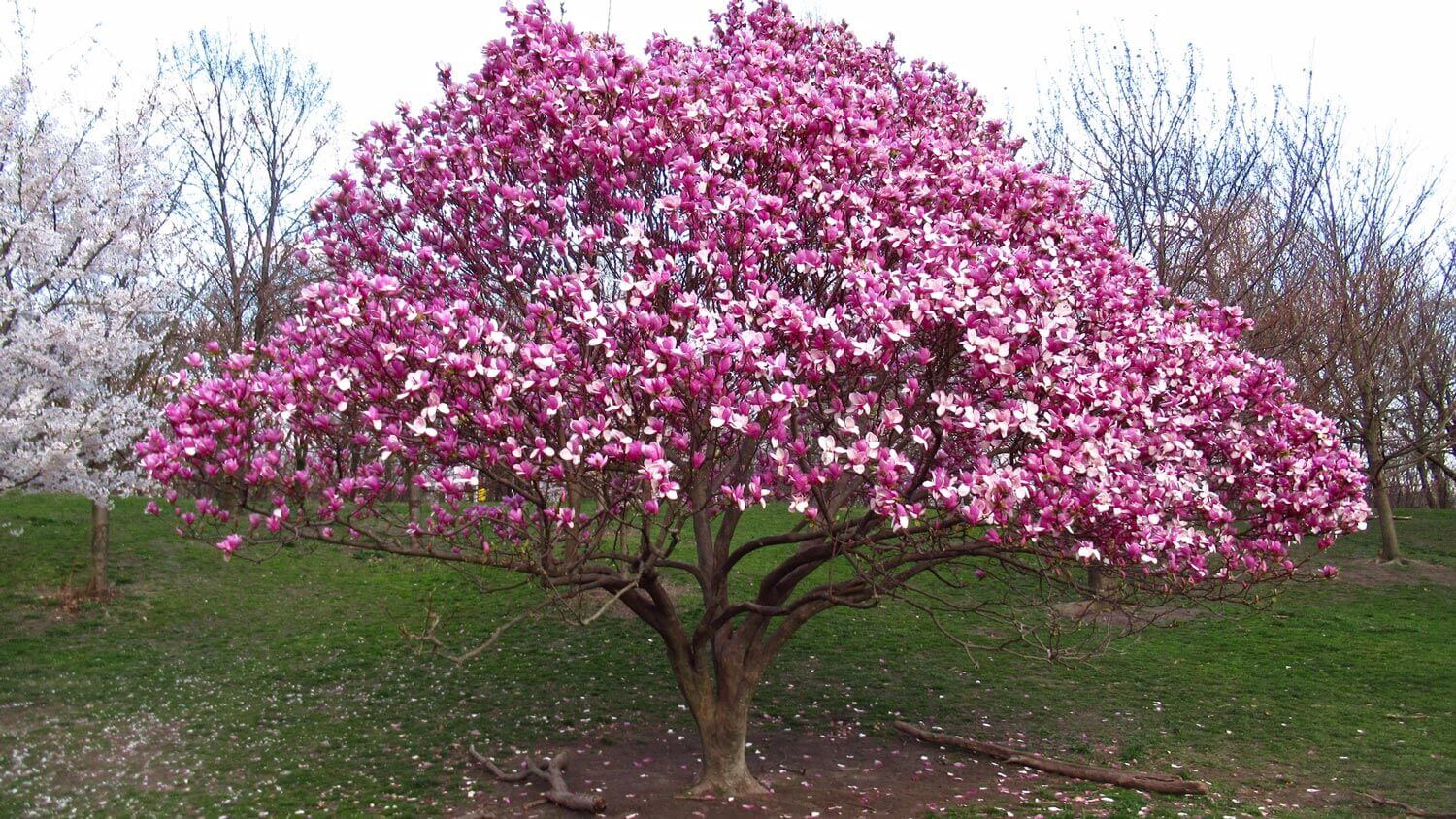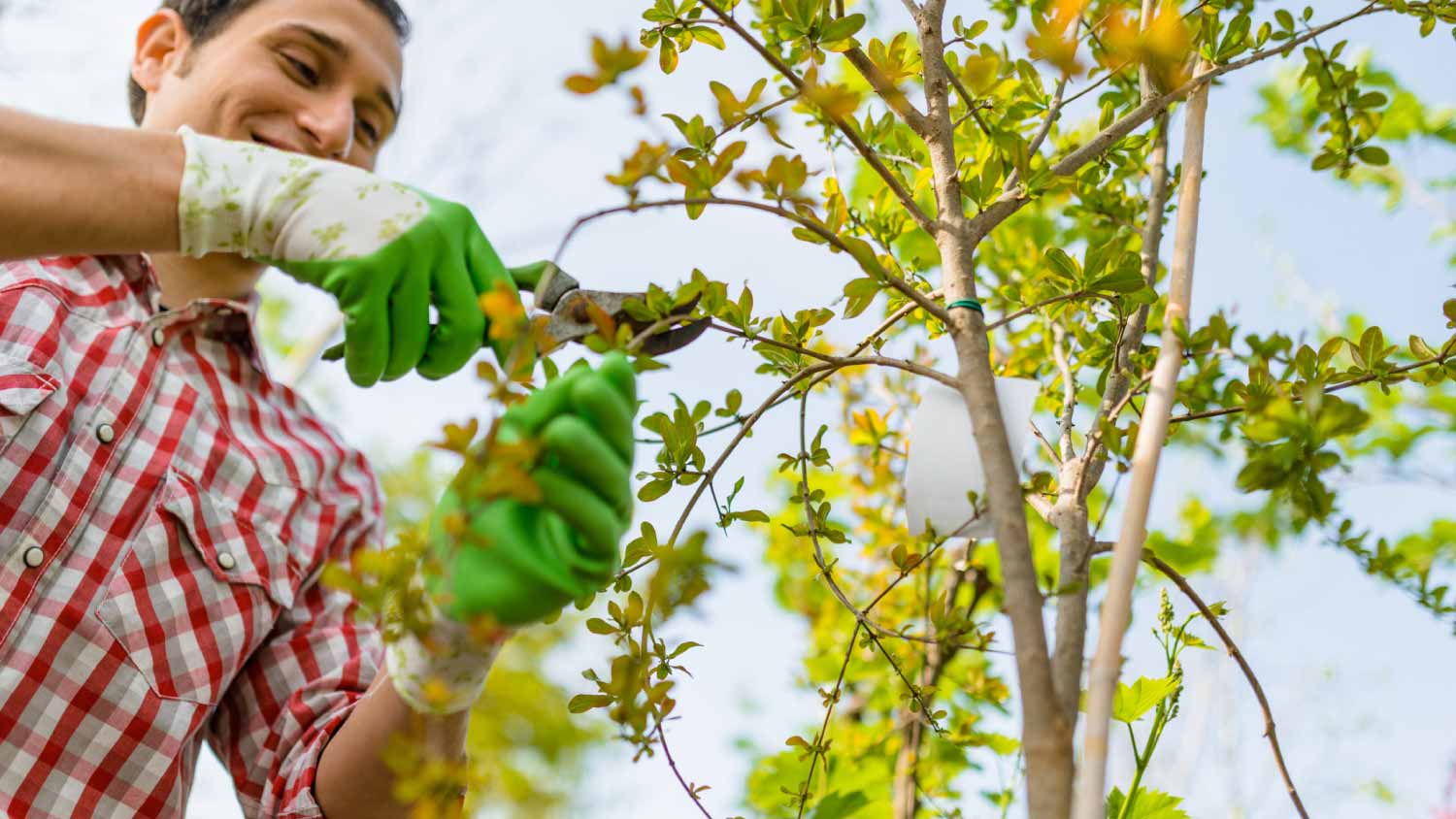The Power of Trees: Learn Which Ones Can Make Your Property Value Flourish
Money can grow on trees


Trees add curb appeal, but the right ones can also add value to your home.
Choose trees that’ll flourish in your region for a beautiful yard year-round.
Healthy trees create a lush outdoor environment for your home.
A landscaped yard full of trees and other greenery can enhance your home’s curb appeal, which in turn can increase the value of your property. Whether you want shade, privacy, or fruit for a homemade dessert, the trees that take root in your yard can provide it all for your home for many years to come.
According to HomeAdvisor, landscape installation costs between $1,320 and $5,570, depending on the size of your yard and the work that needs to be done. Top-rated landscapers near you typically charge between $50 and $150 per hour, not including the cost of the items planted. Get inspired by these trees that add beauty and function to your landscape.
| Type of Tree | Tree Attributes |
|---|---|
| Quaking aspen | Grows quickly and provides shade, stunning yellow leaves in the fall |
| Peach | Yields edible and delicious fruit, durable wood ideal for woodworking |
| Leyland cypress | Slender, dense, an excellent windbreak |
| Northern red oak | Grows quickly, provides shade, russet-red to bright red fall leaves, easy to transplant |
| Weeping willow | Adds privacy and dramatic beauty, helps prevent soil erosion |
| Apple | Yields edible and delicious fruit as early as two years after planting |
| Paper birch | Grows fast and provides shade, excellent wood for woodworking |
| Magnolia | Vibrant, colorful flowering period with pleasant fragrance, softwood for woodworking |
| Dogwood | Spectacular white or pink blossoms in spring, scarlet foliage in fall, and unique dark-patterned bark in winter |
Shade Trees
Plenty of sunlight is normally a bonus for a home, but too much of it can fade its exterior and even furniture and flooring inside the house. A well-placed tree can block some of the sun’s intense rays to make a home and yard feel cooler in the summer months.
The Arbor Day Foundation recommends quaking aspen, northern red oak, and paper birch as fast-growing trees that provide summer-loving shade for your property.
Privacy Trees
While not nearly as effective as a gate or a fence, a row of trees or bushes can signal to others to keep out of your yard. The more closely they’re planted, the more coverage they’ll provide. According to the Virginia Cooperative Extension, adding trees to your landscape can increase property value by anywhere from 5% to 12%. Trees that provide privacy, in particular, can make homeowners feel safe and more at ease when enjoying their space.
We recommend planting narrow, tall trees since they can serve as privacy screens between neighboring houses while not taking up too much space. After a few seasons of growth, the Leyland cypress will become like a fence, and the weeping willow can add dramatic beauty to any property.
Fruit Trees
Fruit trees inherently add value because of the bounty their branches bring each season. Four of the most profitable fruit plants are apples, peaches, strawberries, and blueberries. However, you must harvest the fruit properly. Otherwise, the fallen fruit will spoil and attract unwanted visitors to your garden.
Flowering Trees

If the idea of planting flowers each season in your garden feels too time-consuming, a flowering tree can add the seasonal color you’re looking for. That said, while some trees are majestic in their flowering period, they may look less than radiant in their dormancy. This might not be reason enough to banish a flower-producing tree from your yard entirely, but perhaps it’s best to surround it with other lush greenery or put it in a spot that’s not as prominent.
According to the Magnolia Society International, magnolia trees are valuable because of their lush green leaves and fragrant flowers that appear in white, pink, purple, red, or yellow, depending on the type of tree or bush planted. Dogwoods are known for their spectacular display of white or pink blossoms each season. Or select a cherry blossom tree, known to attract people all over the world for their beautiful blossoms that signal the start of spring.
Understanding Plant Hardiness Zones
It’s all well and good to fall in love with the look of a garden you see on TV or in a magazine, but your dream garden may become a nightmare in your climate. According to the U.S. Department of Agriculture (USDA), the USDA Plant Hardiness Zone Map takes the guesswork out of gardening by indicating the specific geographical zones in which flowers, plants, trees, and other greenery can thrive. Visit the site, enter your ZIP code, and you’ll know what zone you’re in so you can shop for your yard accordingly.
If you find that your favorite tree isn’t a match for your region, visit your local nursery and you’ll likely be able to find something similar that’ll flourish in your gardening hardiness zone.
Can Trees Lower the Value of a Home?
Cutting down trees without a legitimate reason isn’t eco-friendly unless you plan to replant them. However, there are instances where Mother Nature does more harm than good to your property. Here are some reasons you might want to remove trees:
It’s diseased and in danger of falling.
Predators have invaded the tree.
The invasive root system is threatening your home’s foundation or plumbing.
If a tree is blocking most of the natural light to your home, resulting in higher energy costs, an alternative solution to removing it would be to prune your trees.





- 17 Best Fruit-Bearing Trees to Grow in Your Backyard
- Here’s Where To Plant Trees In Your Backyard
- How to Protect Trees From Frost and Prevent Damage
- 7 Reasons Why You Shouldn't Plant a Tree in Your Yard
- 9 Ways to Protect Your Trees From Winter Storms
- Can You Cut Down a Tree on Your Property?
- When to Spray Fruit Trees for Bugs: A Practical Guide
- How to Choose Between a Real or an Artificial Christmas Tree
- 10 Tips to Create Privacy in Your Backyard Without a Fence
- 10 Great Trees for Bees and Other Pollinators










